The Rideau Canal is the best-preserved “levels” canal in North America. Furthermore, it is the only remaining canal from the great 19th-century canal boom with its original structures and is still in operation along its initial route. Today, it is a UNESCO World Heritage Site that tourists flock to experience traveling along this iconic route. But how deep is Ontario’s Rideau Canal, and why was it built?
What is the Rideau Canal?

The Rideau Canal has been primarily used for recreational purposes over the last century as it is one of North America’s oldest continuously operated canals.
©iStock.com/jean-francois
This canal is an inland waterway between Lake Ontario and Ottawa, the Canadian capital. It was initially built as a military project to provide a safe passage between Kingston and Montreal. However, the Rideau Canal has been primarily used for recreational purposes over the last century as it is one of North America’s oldest continuously operated canals. Additionally, it has 24 hand-operated lock stations, and in 2000, it was listed as a Canadian Heritage River.
How Was the Rideau Canal Formed?

Many of the dams and locks were constructed of stone quarried on site, while local blacksmiths forged the iron fixtures.
©iStock.com/CHENG FENG CHIANG
Work on the Rideau Canal began in 1827. It was designed and overseen by a small contingent of Royal Engineer officers and Colonel By. However, the physical labor was contracted out to a private company. Many of the dams and locks were constructed of stone quarried on site, while local blacksmiths forged the iron fixtures. The laborers were sourced to haul the stones and build the locks and dams came from two locations: Lower Canada, where there were French-Canadian settlements, which was the most populated area in the country, and others were chosen from the thousands of immigrants, primarily from Ireland who were arriving by the boatloads. Unfortunately, many laborers succumbed to malaria and had to be replaced by more immigrants.
How Deep is Ontario’s Rideau Canal?
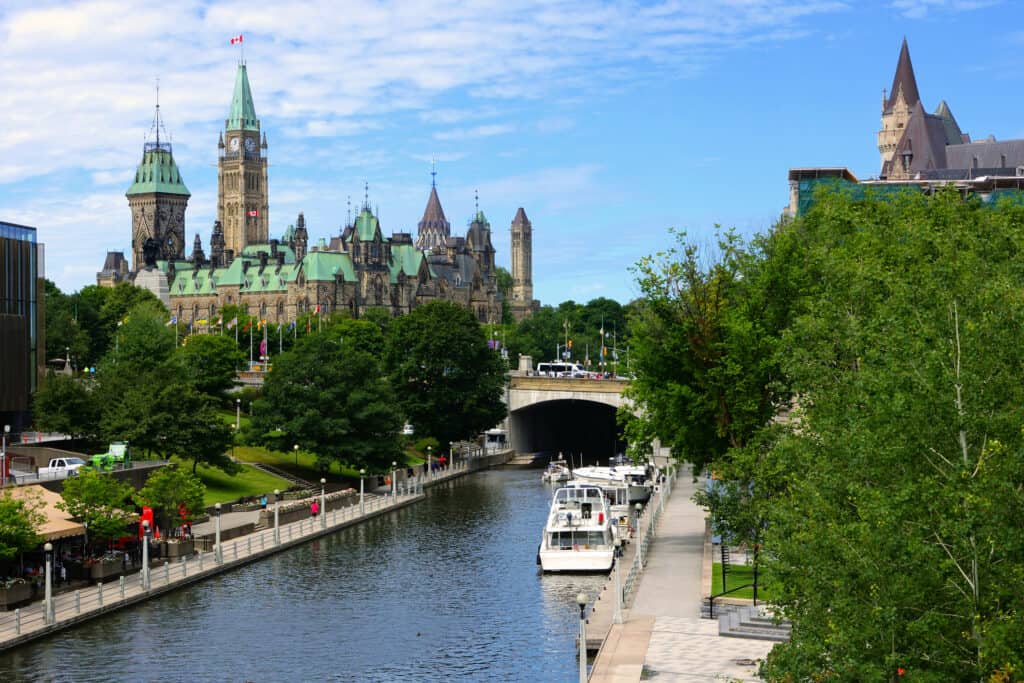
This waterway measures 5 feet deep, so the maximum size of the boats allowed to use this canal must be 90 feet long, 26 feet wide, and 22 feet high.
©iStock.com/jenifoto
How deep is Ontaio’s Rideau Canal? This waterway measures 5 feet deep, so the maximum size of the boats allowed to use this canal must be 90 feet long, 26 feet wide, and 22 feet high. However, if there are drought conditions, it’s best to contact the canal office before making the journey.
How Wide is the Rideau Canal?
The Rideau Canal is 28 feet wide and has an operational length of 90 feet. The canal’s total length is 126 miles, with an approximate travel time of three to five days, one-way.
What Animals Live in the Rideau Canal?
While this canal serves as a transportation route and recreational area, it also houses various wildlife, including:
Canada Goose
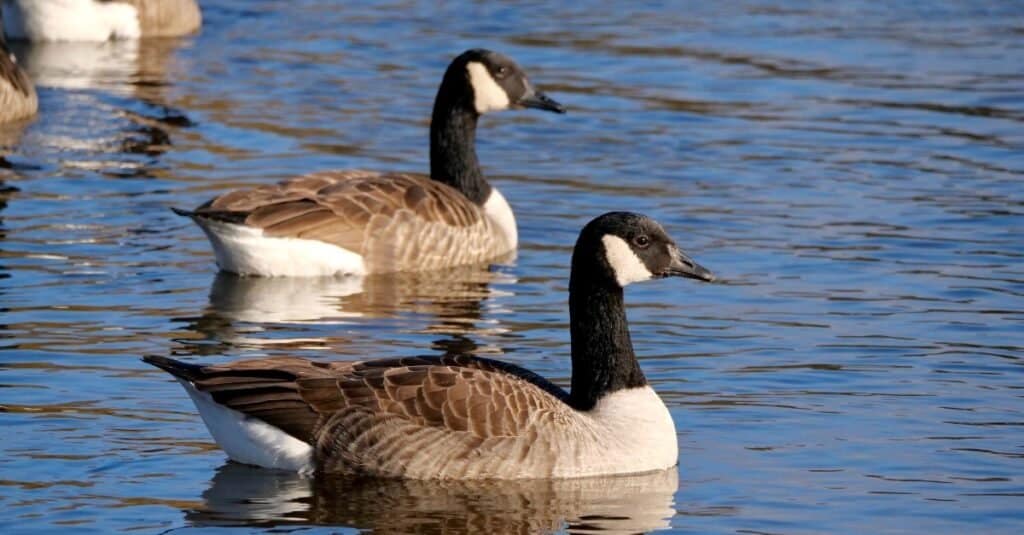
Canadian geese usually inhabit marshes, bays, ponds, lakes, and fields. However, they adapt well to many environments, so habitats will depend on their location.
©iStock.com/yujie chen
These geese are among some of the most well-known waterfowl in the world. Canadian geese passing over in a v-shaped formation signals the changing seasons in many places. While they were once a symbol of the wilderness, these geese have adapted incredibly well to civilization. For example, they often select golf courses or park ponds to nest, and in certain areas, they have actually become a nuisance. Canadian geese usually inhabit marshes, bays, ponds, lakes, and fields. However, they adapt well to many environments, so habitats will depend on their location. But one thing remains the same. These geese always nest near water.
Trumpeter Swans

Efforts are underway to reinduce trumpeter swans to their former breeding range in states like Wisconsin, Ohio, Michigan, Ontario, and Minnesota.
©iStock.com/Zeke1
These beautiful swans once nested throughout most of North America. However, their populations rapidly declined as pioneers moved westward. Unfortunately, less than 100 swans remained south of Canada by the 1930s. But, luckily their numbers have increased in areas in the northwest due to protection from disturbance and hunting. Furthermore, efforts are underway to reinduce trumpeter swans to their former breeding range in states like Wisconsin, Ohio, Michigan, Ontario, and Minnesota.
Eastern Snapping Turtle

The eastern snapping turtle inhabits a wide range of aquatic habitats. They usually occur in ditches, swamps, farm ponds, marshes, reservoirs, rivers, and sloughs.
©Great Smoky Mountains National Park from Gatlinburg, TN, Public domain, via Wikimedia Commons – Original / License
The eastern snapping turtle inhabits a wide range of aquatic habitats. They usually occur in ditches, swamps, farm ponds, marshes, reservoirs, rivers, and sloughs. However, they are very adaptable and can thrive in any place with a permanent water source. These turtles prefer water sources with abundant aquatic vegetation, mud bottoms, snags, and submerged logs because they like to spend most of their time hidden in vegetation or mud. This is the best way for them to hide while they wait for prey to ambush or search the bottom for food. Eastern snapping turtles seldom bask in the sun because they are primarily aquatic.
Northern Water Snake
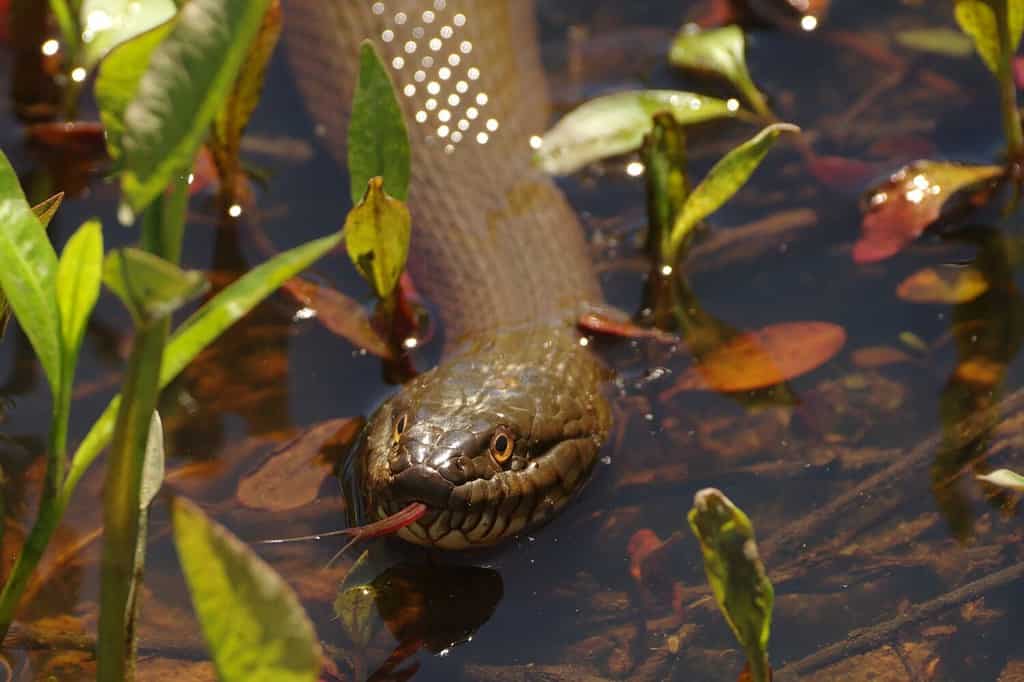
Northern water snakes occur on land, especially the juveniles, but they always stay close to the water.
©Philip Yabut/Shutterstock.com
These snakes occur in various aquatic habitats, like streams, rivers, lakes, sloughs, bogs, ponds, impoundments, and marshes. However, they prefer open areas with many areas to bask in the sun and calm waters. Furthermore, Northern water snakes occur on land, especially the juveniles, but they always stay close to the water. When they are not hunting or basking in the sun, they take cover under logs, flat rocks, boards, and other items in the vicinity. These snakes are the most common snake species that occur near water throughout North America.
Muskrat
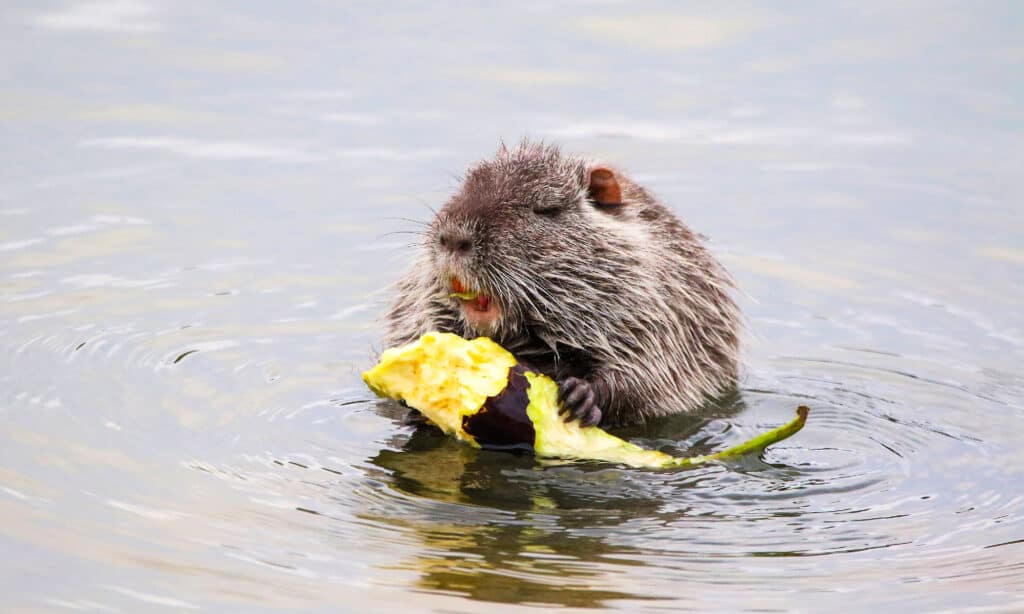
Muskrats derived their name from the musk-like odor that exudes from them. These rodents inhabit streams, rivers, marshes, lakes, and reservoirs.
©YanLev/Shutterstock.com
These stocky rodents dig burrows in the banks of waterways and have unique adaptations that allow them to survive a semi-aquatic lifestyle. Their brown fur is buoyant and insulating, and their hind feet are partially webbed, with a scaly tail. Furthermore, they have protruding front teeth, which help keep water out of their mouths when they chew on aquatic plants. Muskrats derived their name from the musk-like odor that exudes from them. These rodents inhabit streams, rivers, marshes, lakes, and reservoirs. Muskrats are adapted to aquatic living and can hold their breath for approximately 20 minutes while swimming underwater. Additionally, they use their tails as rudders to propel them forward. These rodents have many predators, including raptors, mink, coyotes, foxes, bobcats, otters, and largemouth bass.
River Otter
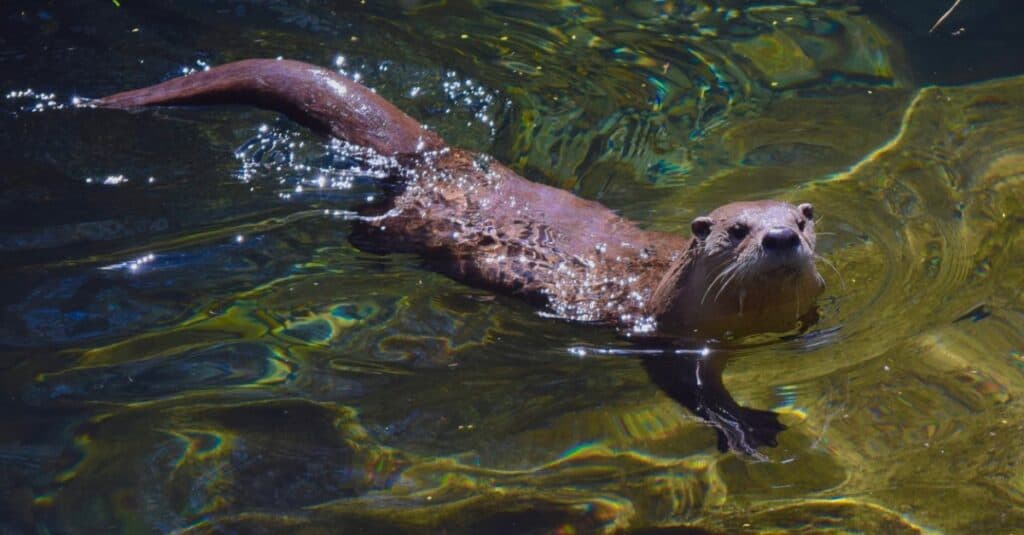
River otters have a diverse diet ranging from crayfish, frogs, insects, fish, and small mammals. Their hunting strategies vary as they sometimes hunt alone but other times hunt in pairs.
©iStock.com/Kathryn Farley
These otters occur throughout most of North America, from Alaska and Canada to the Rio Grande. However, they do not inhabit the Arctic or arid deserts. They typically live in the same areas as beavers in riparian zones. But they are highly adaptable and survive in both fresh and marine water, like lakes, streams, ponds, and marshes. However, they prefer unpolluted areas with minimal human interaction. These critters can tolerate hot and cold temperatures and survive at high elevations as well as lowland coastal waters. River otters have a diverse diet ranging from crayfish, frogs, insects, fish, and small mammals. Their hunting strategies vary as they sometimes hunt alone but other times hunt in pairs. And while they usually forage in water, they are also very comfortable on land. For example, river otters can travel between 10 and 18 miles when searching for food.
The photo featured at the top of this post is © Aqnus Febriyant/Shutterstock.com
Thank you for reading! Have some feedback for us? Contact the AZ Animals editorial team.







